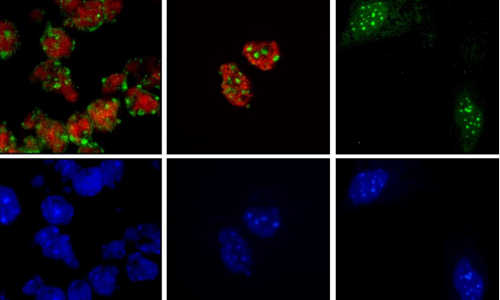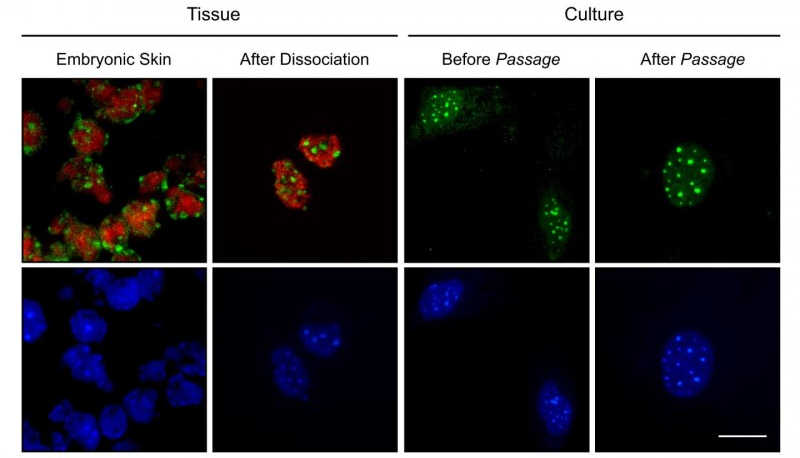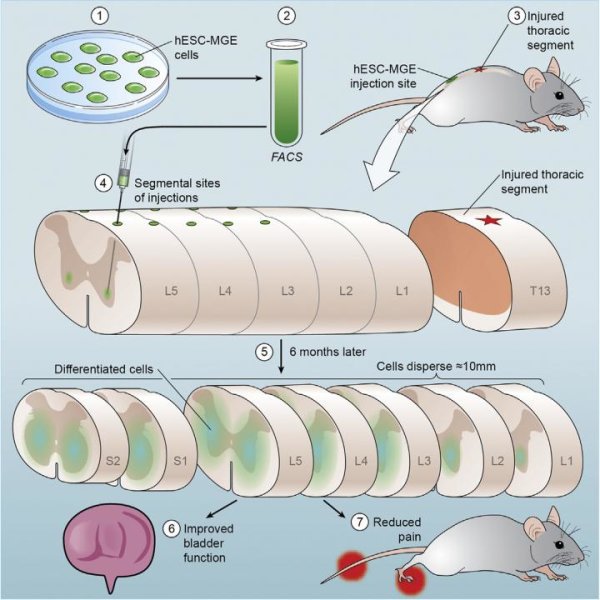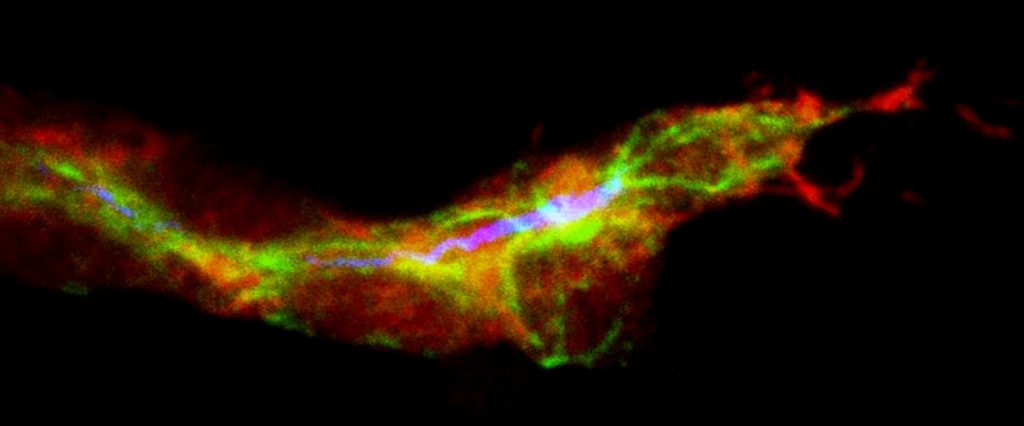Cell cultures used in biology and medical research may not act as a faithful mimic of real tissue, according to research published in Genome Biology.
Now you see it, now you don’t: the epigenetic mark, 5-hydroxymethylcytosine (5hmC), does a disappearing act in culture. Mouse skin cells before and after cell culture show major loss of 5hmC, one of the many rapid molecular changes observed in cell cultures, reported by Nestor and colleagues in Genome Biology. Images depict the loss of red immunostaining for 5hmC in nuclei from cells grown in culture, but not green immunofluorescence (5-methylcytosine) and blue DAPI staining (DNA). Scale bar 5 microns. Photo Credit: S. Pennings lab.
The study finds that laboratory-grown cells experience altered cell states within three days as they adapt to their new environment. Studies of human disease, including cancer, rely on the use of cell cultures that have often been grown for decades. The findings could therefore affect the interpretation of past studies and provide important clues for improving cell cultures in the future.
Scientists typically use models to study the basics of human biology. The most common model system is cultured cells, which are taken from the body and coaxed into growing on a plastic dish in the laboratory. Though a linchpin of modern research, it has long been known that the cells in the laboratory can behave differently from those in the body, affecting the understanding of diseases and the development of drugs.
Researchers from the MRC Human Genetics Unit at the University of Edinburgh, UK, and Linköping University, Sweden, have revealed just how quickly cells change their identity when grown in the laboratory. They found that cells adapt to cell culture systems within one week of growth in a laboratory dish. The analysis provides new insight into how faithfully these cells mimic real tissue, and how models of human disease can still be improved.
Study author Richard Meehan from the MRC Human Genetics Unit at the University of Edinburgh, UK, said: “We were astonished by the speed and spread of the changes. Many cultured cells used in research have been grown for decades and as a result are likely to have very different properties from the cells they are supposed to model. Our findings suggest that we have to be circumspect about the interpretation of some previous experiments, and our data reinforces a growing realisation that cell line models of human diseases, particularly cancer, can be poor surrogates for many aspects of in-vivo biology.”
The researchers compared the DNA of mouse cells, taken from male and female embryos, with cells that were cultured in plastic dishes. They found a number of indicators that the cultured cells underwent an altered cell state as they became adapted to the cell culture environment, including a decrease in gender differences between male and female cultured cells.
The mouse cells in culture experienced a rapid reprogramming of their ‘epigenomes’ – a layer of chemical modifications that mark the genome to control how genes are expressed. This was indicated by a near-complete loss of one epigenetic mark, 5-hydroxymethylcytosine (5hmC), within three days over the whole genome.
They also found similar results in an unrelated tissue. Using mouse CD4+ T-cells, which have a role in the immune system, they found an almost five-fold reduction in 5hmC levels after three days in culture.
In addition, the researchers saw that there were widespread changes in gene expression for cells in culture, affecting over 7,200 genes. Some of these genes were linked to cell adhesion, possibly reflecting adaptation to growth on a two-dimensional plastic surface, and others were involved in a variety of epigenetic processes.
The researchers went on to show that some of these changes could be prevented by adding Vitamin C to the culture medium. This suggests that by improving culturing techniques, researchers may be able to more accurately match cells grown on a dish to cells that are taken directly from tissues. These improvements should allow researchers to have more confidence that what they observe in the laboratory accurately reflects what is happening in the body.
Story Source:
The above story is based on materials provided by BioMed Central.






